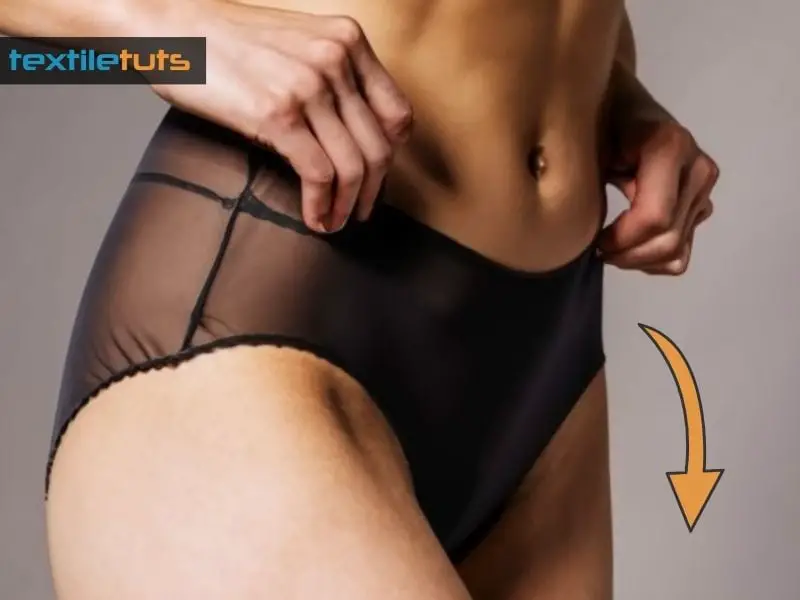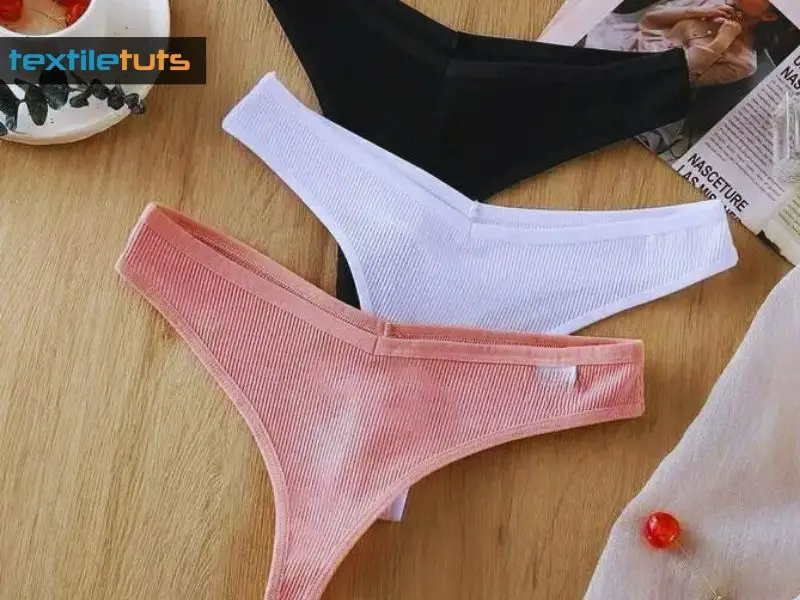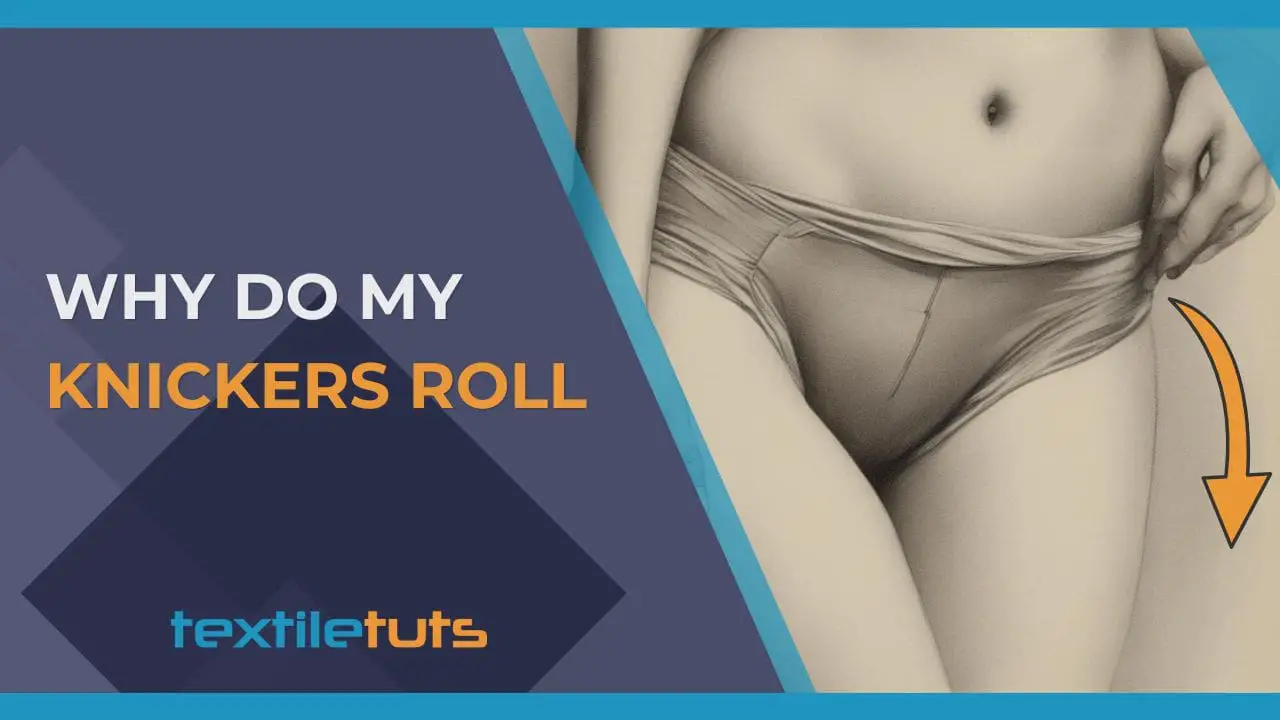Why Do My Knickers Roll? – Resolve The Rolling Woes
Knickers, panties, briefs, or whatever you prefer to call them, are fundamental clothing items for women. They are designed to provide comfort, support, and protection throughout the day. However, many women experience an annoying issue with their panties; they roll down, causing discomfort and frustration.
Your undergarments may roll due to improper fit, fabric type, rough seams, body movement, and frequent washing. To avoid this, choose well-fitted, comfortable underwear made from stretchy fabric with smooth seams and consider different styles and brands if needed.
I’ll explore why knickers roll. Also, I will provide practical tips and solutions to help you avoid this issue and feel comfortable in your undergarments.
Common Causes of Knicker Rolling Down
Knicker rolling down can be a common and bothersome problem many people face. Various factors can contribute to this issue, leading to discomfort and the need for constant readjustment. Here are the most common causes of knicker rolling down:

Loose Waistbands
One of the most common reasons for knickers rolling down is a loose waistband. When the strap lacks sufficient elasticity or has stretched out over time, it fails to provide a secure fit around the waist. As a result, the knickers tend to slide down, causing discomfort and the need for constant readjustment.
Low-Quality Fabrics
The choice of fabric plays a significant role in the comfort and fit of knickers. Low-quality materials may need more stretch and recovery properties, leading to sagging and rolling down. Fabrics with a poor elastic component can quickly lose shape and exacerbate the rolling-down problem.
Wearing the Wrong Size
Wearing either too small or too big knickers can lead to rolling down. If the knickers are too tight, they may cut into the skin and cause discomfort, while overly loose knickers are prone to slipping. Finding the right size that provides a snug fit without constricting is crucial.
Poor Elasticity
The elasticity of the waistband and leg openings is crucial for keeping knickers in place. Over time, elastic can wear out, losing its ability to maintain tension effectively. When the elasticity diminishes, the knickers are more likely to roll down.
Inaccurate Fitting
Even if they are the right size, ill-fitting knickers can contribute to rolling down. Poorly designed patterns or inaccurate cuts can cause the garment to shift and slide during movement, leading to constant adjustments and discomfort.
Movement and Activity
The activity level and movement throughout the day can impact the performance of knickers. Engaging in activities that involve a lot of bending, stretching, or vigorous movement can cause knickers to shift out of place, resulting in rolling down.
Seams and Stitching
Poorly constructed underwear with rough or bulky seams can irritate and may lead to the fabric rolling up.
Body Shape
Different body shapes can interact with the knickers uniquely, causing them to roll for some individuals.
Weight Loss
Significant weight loss can affect the fit of clothing, including knickers. If the waistband becomes loose due to weight loss, the knickers may not stay in place as intended, leading to rolling down.
Washing & Care Instructions
Ignoring proper washing and care instructions for knickers can also contribute to their rolling down. Harsh washing methods or using the wrong detergent can lead to fabric deterioration and loss of elasticity, making the garment prone to rolling down.
DIY Solutions to Fix Rolling Down Knickers
If you’re experiencing knickers rolling down, there are some DIY solutions you can try to fix the issue and improve the fit and comfort of your undergarments. Here are some practical DIY fixes:
Elastic Replacement
If the waistband elastic has lost its stretch or become ineffective, you can replace it with a new elastic band. Carefully remove the old elastic from the waistband, measure the length needed for a snug fit, and sew in the new elastic, ensuring it’s evenly distributed around the waistband.
Tightening the Waistband
You can tighten the waistband without replacing the entire elastic when it is too loose. Create small tucks or pleats along the waistband and stitch them in place. This DIY alteration will help improve the waistband’s fit and prevent it from rolling down.
Sew-on Waistband Gripper
Sew a thin silicone or rubber waistband gripper on the inside of the waistband. This gripper will create friction with your skin or clothing, helping to keep the knickers in place and prevent them from rolling down.
Elastic Band Insertion in Leg Openings
Insert a narrow elastic band along the inside of the leg openings if the leg openings are causing the knickers to roll down. This will add more grip and prevent the knickers from slipping during movement.
Take in the Side Seams
In the case where the knickers are the right size but tend to roll down because of inaccurate fitting, a simple solution is to take in the side seams slightly. This adjustment will enhance the fit, providing a more customized feel and avoiding unnecessary shifting.
Layer with High-Waisted Bottoms
Wearing high-waisted bottoms, like shapewear or high-rise panties, over your regular knickers can provide extra support and keep them from rolling down.
Sew-in Snap Buttons or Hook-and-Eye Closures
For knickers with a front opening, you can sew in snap buttons or hook-and-eye closures to secure the front and prevent them from unfastening and rolling down.
How to Prevent Knickers from Becoming Loose and Rolling Down?
Preventing knickers from becoming loose and rolling down is essential for ensuring comfort and confidence throughout the day. Here are some tips to help you maintain a secure fit and prevent knicker rolling:

Choose the Right Size
Start by wearing knickers that fit you properly. Avoid wearing knickers that are too tight or too loose. Refer to the brand’s size chart and measurements to find the best-fitted pair for your body shape.
Invest in High-Quality Knickers
Opt for knickers made from high-quality fabrics that have good elasticity and durability. Quality materials will retain their shape better and resist becoming loose over time.
Check the Elasticity
Before purchasing or wearing knickers, check the elasticity of the waistband and leg openings. Ensure that the elastic is firm but not too tight. Elastic that is too loose will not hold the knickers in place.
Proper Washing and Care
Follow the manufacturer’s washing and care instructions to maintain the integrity of the knickers. Avoid harsh detergents or fabric softeners that can weaken the elastic and cause the knickers to lose shape.
Avoid High Heat
Excessive heat, such as tumble drying on high heat, can damage the elastic in knickers. Air-dry your knickers or use the lowest heat setting on your dryer to preserve their elasticity.
Rotate Your Knickers
If you have several pairs of knickers, rotate them regularly to prevent overstretching of the elastic in a single pair. This will help prolong the life of your knickers and maintain their fit.
Choose Seamless Options
Seamless knickers tend to have better elasticity and fit more smoothly under clothing, reducing the likelihood of rolling down.
Wear High-Waisted Knickers
High-waisted knickers provide extra coverage and support around the waist, reducing the chance of rolling down compared to low-rise options.
Choose Knickers with a Wide Waistband
Knickers with a broader waistband distribute pressure more evenly, making them less likely to roll down.
Wear Suspenders or Garters
If you’re comfortable with them, consider using suspenders or garters to keep your knickers in place. These accessories can help prevent rolling and ensure a secure fit.
Monitor Weight Changes
Keep an eye on weight fluctuations, as significant changes can affect the fit of your knickers. If you experience weight loss or gain, reassess your size and adjust accordingly.
Best Type of Fabric for Underwear
The best type of fabric for underwear depends on personal preferences and individual needs. However, there are a few popular and comfortable options to consider.

| Fabric | Characteristics | Pros | Cons |
| Cotton | Soft, breathable, absorbent, and durable | It can be susceptible to shrinking and pilling | It can be less breathable than cotton and can be prone to pilling |
| Modal | Soft, smooth, and breathable | Similar to cotton in terms of comfort and breathability, but less likely to shrink or pill | It can be more expensive than cotton |
| Microfiber | Soft, smooth, and lightweight | Very absorbent and dries quickly, making it ideal for activewear | It can be expensive and less durable than other fabrics |
| Bamboo | Soft, smooth, absorbent, and breathable | Similar to cotton in terms of comfort and breathability, but has antibacterial and moisture-wicking properties | It can be more expensive than cotton |
| Silk | Soft, smooth, and luxurious | Very comfortable and gentle on the skin and has moisture-wicking properties | Can be expensive and less durable than other fabrics |
| Synthetic Blends | Often a blend of cotton, polyester, and spandex | It can offer a combination of the best qualities of natural and synthetic fibers | Can be less breathable than natural fibers and prone to pilling |
| Nylon | Strong, durable, and wrinkle-resistant | It can provide a snug fit and support and is resistant to fading and shrinking | Can be less breathable than natural fibers and prone to static cling |
| Polyester | Strong, durable, and wrinkle-resistant | Can provide a snug fit and support and is resistant to fading and shrinking | Can be less breathable than natural fibers and can be prone to static cling |
| Lace | Delicate, feminine, and elegant | Can add a touch of style and sophistication to underwear | Can be less durable than other fabrics and susceptible to snags and tears |
| Lycra/Spandex | Stretchy, breathable, and comfortable | It can provide a snug fit and support and is resistant to stretching and shrinking | Can be less durable than other fabrics and prone to pilling |
Ultimately, the best fabric for underwear is the one that is most comfortable for you and meets your needs. If you have sensitive skin, you may want to choose a gentle fabric, such as cotton or bamboo.
You may choose a moisture-wicking and breathable fabric, such as microfiber or bamboo if you have an active lifestyle.
Final Words
Experiencing rolling knickers is a common issue for many women, and various factors can contribute to this problem.
Understanding the underlying causes, such as the type of fabric, fit, and cut of your underwear, can help you choose the proper undergarments that will stay in place and provide the comfort and support you need throughout the day.
Consulting with a professional fitter or trying different styles and brands can also help you find the perfect fit to prevent your knickers from rolling and keep you confident and comfortable.

